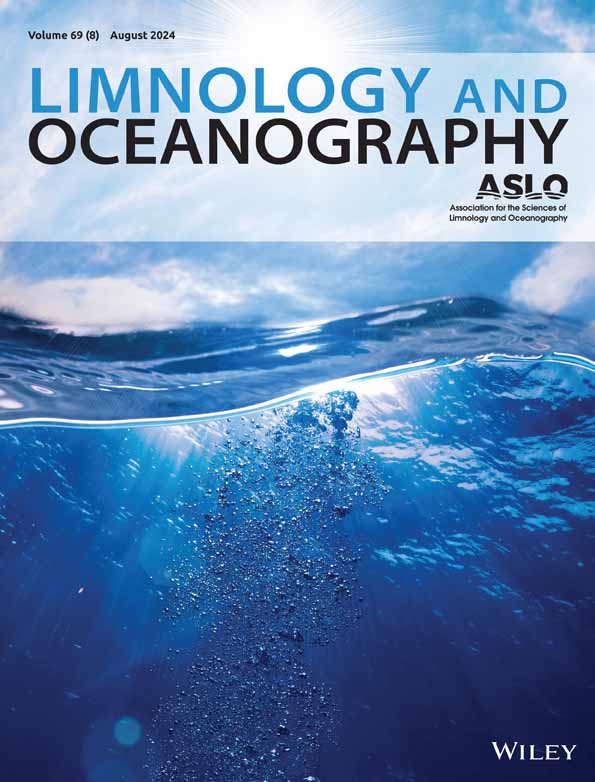Seasonal and spatial transitions in phytoplankton assemblages spanning estuarine to open ocean waters of the tropical Pacific
IF 3.8
1区 地球科学
Q1 LIMNOLOGY
引用次数: 0
Abstract
Islands in the tropical Pacific supply elevated nutrients to nearshore waters that enhance phytoplankton biomass and create hotspots of productivity in otherwise nutrient‐poor oceans. Despite the importance of these hotspots in supporting nearshore food webs, the spatial and temporal variability of phytoplankton enhancement and changes in the underlying phytoplankton communities across nearshore to open ocean systems remain poorly understood. In this study, a combination of flow cytometry, pigment analyses, 16S rRNA gene amplicons, and metagenomic sequencing provides a synoptic view of phytoplankton dynamics over a 4‐yr, near‐monthly time series across coastal Kāneʻohe Bay, Hawaiʻi, spanning from an estuarine Indigenous aquaculture system to the adjacent offshore environment. Through comparisons with measurements taken at Station ALOHA located in the oligotrophic North Pacific Subtropical Gyre, we observed a sharp and persistent transition between picocyanobacterial communities, from热带太平洋河口至开阔海域浮游植物群落的季节和空间变化
热带太平洋的岛屿为近岸水域提供了更高的营养,从而增加了浮游植物的生物量,并在营养贫乏的海洋中创造了生产力热点。尽管这些热点在支持近岸食物网方面具有重要意义,但浮游植物增强的时空变异性以及近岸到开阔海洋系统中浮游植物群落的变化仍然知之甚少。在这项研究中,流式细胞术、色素分析、16S rRNA基因扩增子和宏基因组测序相结合,提供了4年近一个月时间序列的浮游植物动态概览,横跨夏威夷岛Kāne霍伊湾沿海,从河口本土水产养殖系统到邻近的近海环境。通过与位于北太平洋副热带少营养环流的ALOHA站的测量结果进行比较,我们观察到一个尖锐而持久的picocyanobacteri群落之间的转变,从近岸丰富的聚球藻进化枝II (Synechococcus clade II)到近海和开阔海域丰富的原绿球藻高光适应进化枝II (HLII)。与邻近的近海水域和周围的公海相比,Kāne夏威夷湾内的浮游植物生物量显著增加。近岸浮游植物生物量与风速、降雨量和风向呈正相关,与水温无关。这些发现阐明了热带太平洋海洋生物地球化学和浮游植物动态跨越河口向开放海域转变的时空动态,并为量化持续气候变化导致的基线条件偏差提供了基础。
本文章由计算机程序翻译,如有差异,请以英文原文为准。
求助全文
约1分钟内获得全文
求助全文
来源期刊

Limnology and Oceanography
地学-海洋学
CiteScore
8.80
自引率
6.70%
发文量
254
审稿时长
3 months
期刊介绍:
Limnology and Oceanography (L&O; print ISSN 0024-3590, online ISSN 1939-5590) publishes original articles, including scholarly reviews, about all aspects of limnology and oceanography. The journal''s unifying theme is the understanding of aquatic systems. Submissions are judged on the originality of their data, interpretations, and ideas, and on the degree to which they can be generalized beyond the particular aquatic system examined. Laboratory and modeling studies must demonstrate relevance to field environments; typically this means that they are bolstered by substantial "real-world" data. Few purely theoretical or purely empirical papers are accepted for review.
 求助内容:
求助内容: 应助结果提醒方式:
应助结果提醒方式:


